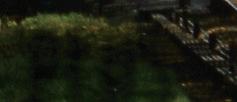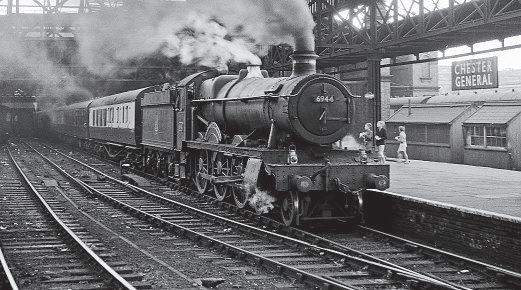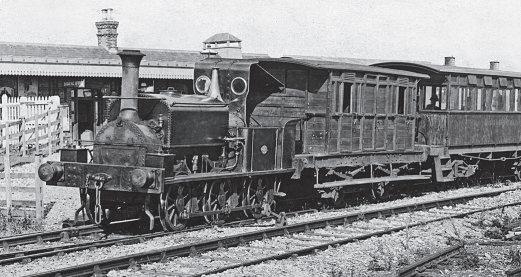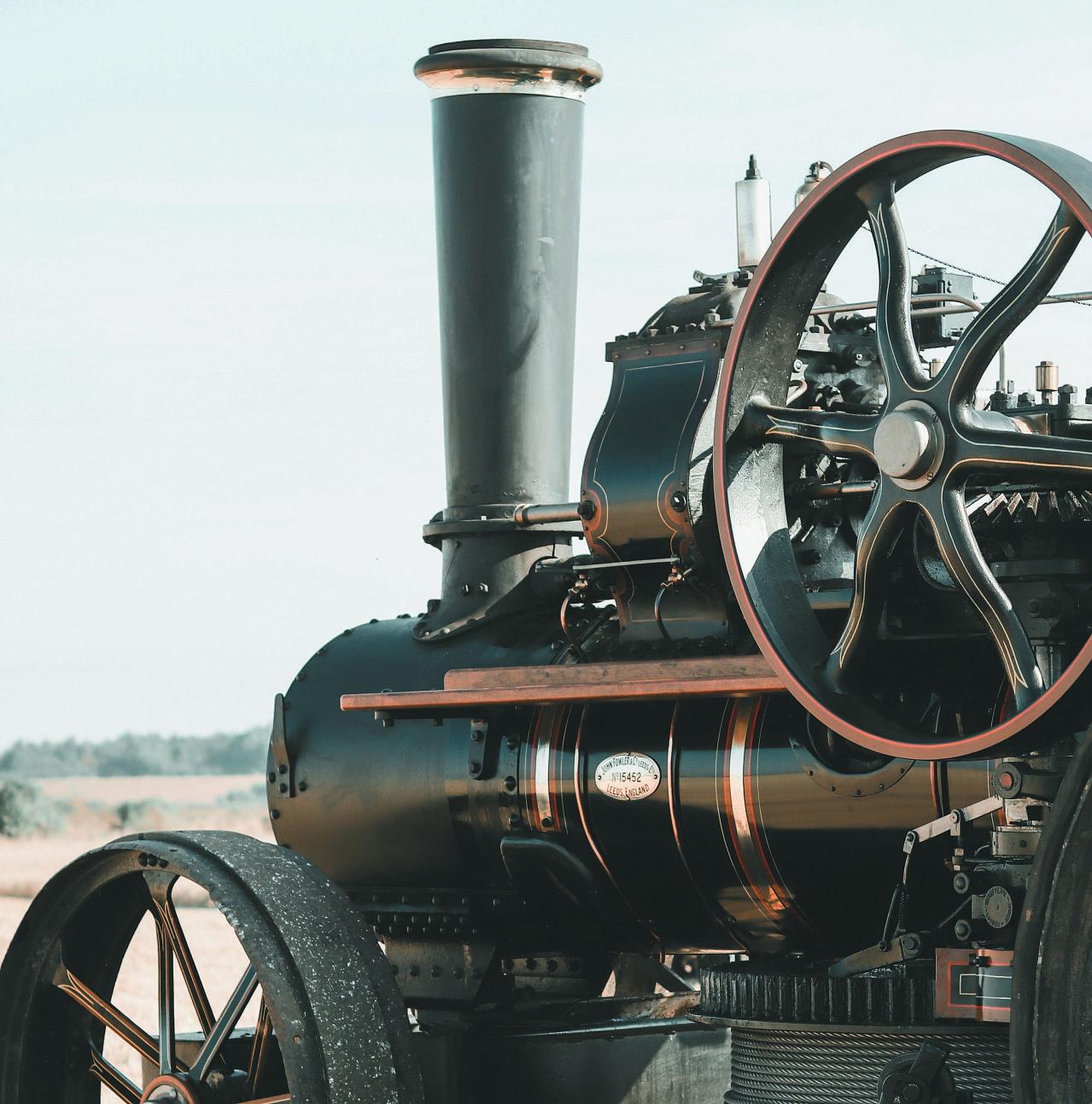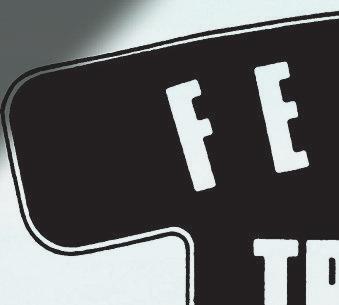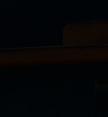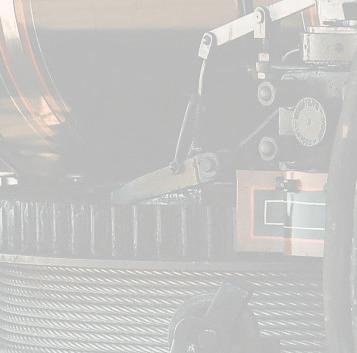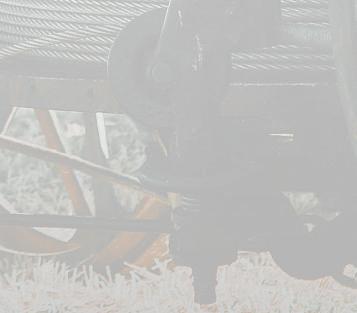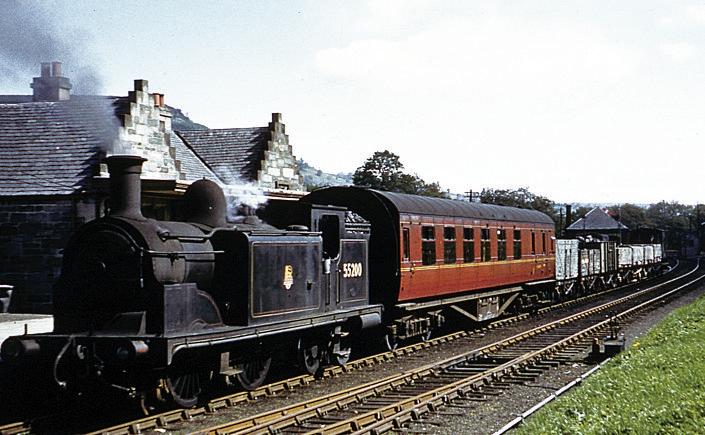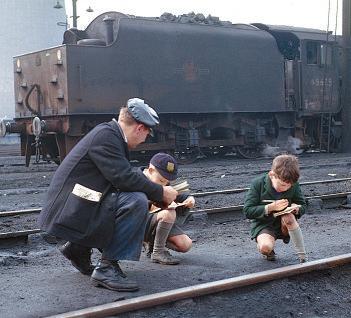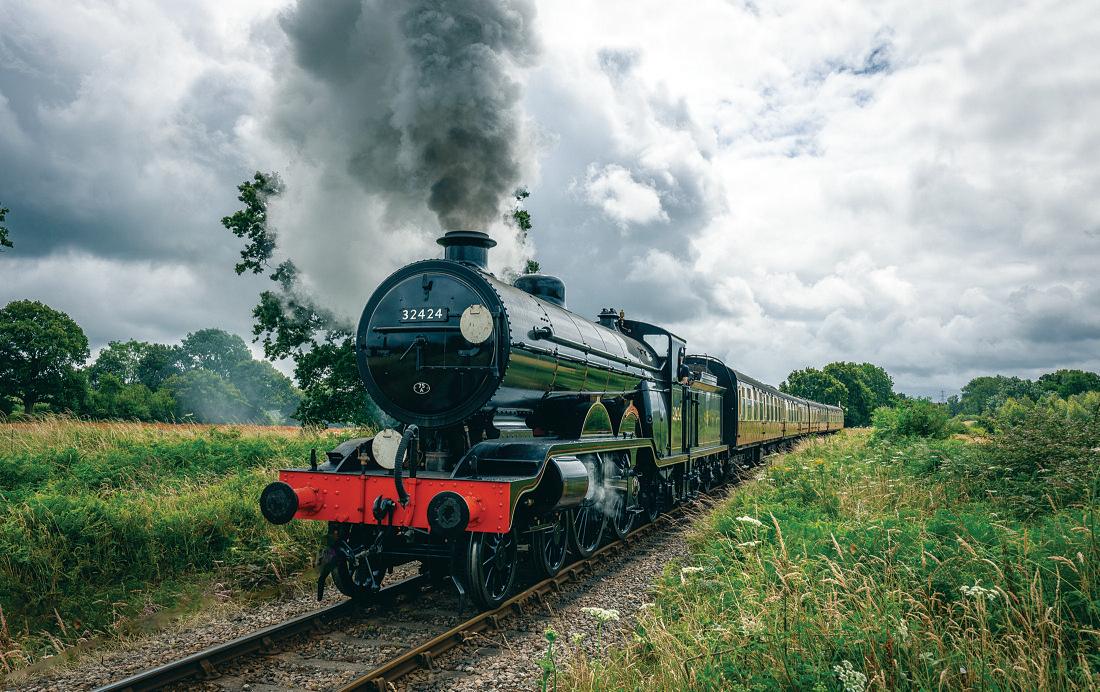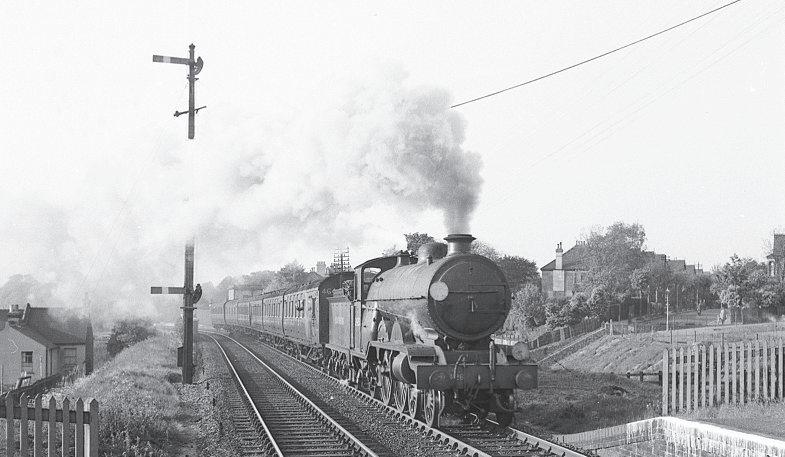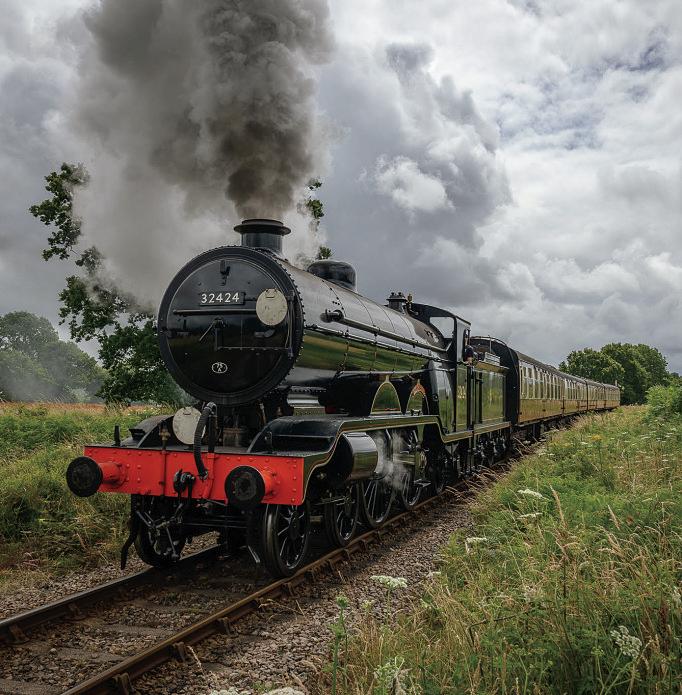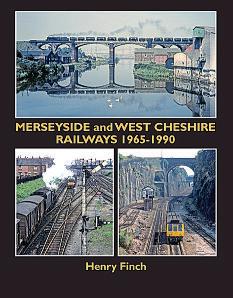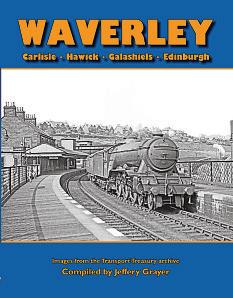Beachy Head Putting awrong,right
With thenew-build ‘BeachyHead’ nowinsteam at theBluebell Railway, Andrew Britton offers theback-storytothe ‘Brighton Atlantics’,largely concentratingon theirpost-warworkand recallingthe sadlossofNo32424 ‘Beachy Head’asthe last of thetype, its official withdrawal coming on 3May 1958after 1,090,661 milesof serviceacrossa 47 year workinglife.
The late RH N‘Dick’ Hardy, former shedmaster of Stewarts Lane motive powerdepot,and driver Bert Hooker of Nine Elms shed oftenlamentedthatwhenthe last ‘BrightonAtlantic’ wascut up at Eastleigh agreat wrongwas done,asNo32424 Beachy Head wasa very worthy candidatefor preser vation.Aswegotopress,thisgreat wrongisbeingput rightbythe Bluebell RailwayAtlanticGroup Severalyears ago, aformerGreat Northern RailwayAtlanticboilercameupfor sale andwas purchasedwiththe intentionof usingittobuild areplica London,Brighton& SouthCoast Railway4-4-2atthe Bluebell RailwayinSussex. Theboilerwas discovered in EssexbyNickPigottand SteveDymondat ajoinery businessowned by Boulton& Paul Ltd– it wasinuse by previous owners John Sadd Ltduntil 1975 when anew heating system wasinstalled.Sinceacquiring that boiler,significant progress included the acquisitionofanex-LB&SCR‘B4’tender chassisand also ‘C2X’tenderwheelsets and axleboxes. Themainframeswerecut and assembled, plus thedriving andbogie wheels
werecastand fitted.While amyriadofjobs wasbeing undertaken, interest in theproject increased, newcomponent partswere manufactured, andevenlonglosttreasures were donated, such as thelastAtlantic’s regulatorhandle. Aftercountless hoursof hard work,the task of puttingthe wrong, right begantobeevermorevisible,culminating in steamtests, lightengineruns, loaded tests, andthenthe recent announcement that ‘Itis intended to introduce32424 Beachy Head into serviceatthe Bluebell Railwaybetween August 23rdand September1st 2024’.
I’dliketothinkthatperhaps within a week of this articleappearing in your hands, a fewofyou will be amongthe firsttoenjoy the newera of the‘H2’class 4-4-2, therebirth of a MarshAtlantica hugely exciting realisationof
adream.I very much look forwardtomyfirst journeyand,inspiredbythe revival, Ihave delved throughmyown archives to better appreciate allthatweoncethought waslost.
The‘Brighton Atlantics’ have afascinating histor y. DouglasEarle Marshdesignedthese magnificentlocomotives afterarriving at the LB&SCR from theGreat Northern Railwayin 1904 andonly11exampleswereconstructed, thefirst five beingbyKitson& Co Ltdof Leedsasthe ‘H1’ class, with theremaining six produced by Brighton Worksin1911 as ‘H2’ class. TheAtlantics were builtfor thepurpose of haulingpassenger trains on the52mile routebetween London andBrightoninone hour.I lovedthe namesgiven to them,which were allofgeographical landmarks, as seen in TableOne
TableOne
The‘Brighton Atlantics’,their namesand withdrawal dates
FinalNoNameGeographicallocationWithdrawaldate
‘H1’ class(built1905/06)
32037 Selsey Bill SouthofChichester,WestSussexJuly1951
32038 Portland Bill Portland,DorsetJuly1951
32039 Hartland Point* West of Bideford, northDevon February 1951
2040 St Catherine’sPoint Isle of WightJanuary 1944 2041 PeverilPoint Swanage, Dorset March1944
‘H2’ class(built1911/12)
32421 SouthForeland Dover, Kent August 1956
32422 NorthForeland Broadstairs, Kent September1956
2423 TheNeedles Isle of WightMay 1949
32424 Beachy Head Eastbourne,SussexApril 1958
32425 TrevoseHead Padstow, Cornwall September1956
32426 St Alban’sHead Swanage, Dorset August 1956
*For useona trainfor astate visitofthe French President,LB&SCR No 39 wasnamed La France in June 1913; it carriedthisuntil renamed Hartland Point in Januar y1926.
Fortyyears afterthe idea of arecreatedenginewas firstfloated,new build ‘BrightonAtlantic’ No32424 BeachyHead hasemerged from theworkshop andedges gingerly away from Sheffield Park andtowards HorstedKeyneswithanempty stockfull-line test runusingthe ‘Wealden Rambler’ setonWednesday, 10 July 2024. JamesCummins/BluebellRailway

EmergingfromPatcham tunnel into theDowns beyond,LB&SCRMarsh ‘H1’ 4-4-2No41heads forLondonwitha Brighton to Victoriaexpress.The viewisundated butthe absenceofanampersand betweenthe Land Bletters on thetender, andalsothe headcode carried, suggestthatitwas taken between1911 and1917. Theliveryisumber,edged with adarkershade of umber, lined in blackand edgedwitha gilt lineoneitherside. Theoriginal roof pattern is apparent,asisthe absenceofa nameplate. DouglasEarle Marshaslocomotivesuperintendent of theL&BSCR took adim view on the naming of engines anditwasn’tuntil theadventofthe Southern Railway that thename PeverilPoint wasappliedtothisengine, at thesametimeit receivedSouthernMaunsellgreen liveryinMarch 1925 SteamDaysCollection
Post-Grouping,the establishedworkof theselocomotives waslostwhenon 30 December 1932 theSouthernRailway extendedand inauguratedthird rail electrificationthrough to Brighton,marking theend of express steamhaulage on the London to Brighton main line. Laterinthe decade,the Atlanticsweretrialledelsewhere on theEastern andWestern divisions of theSR, butultimatelytheydid notstray farfromthe Centralsection,findingworkonLondontrains from Eastbourne,BognorRegis andeven Portsmouth Harbour. Newhaven shed received apairof‘H1s’fromEastbourneinFebruary 1933, wheretheytookupcontinental boat trainduties, whilethe otherfiveatEastbourne were soon transferredtoNew Crossshed. The AtlanticswereemployedonsomeBrightonto London ‘businesstrains’ via Uckfield,but express work diminished with further
electrificationatEastbournefrom7 July 1935, andoverthe Mid-Sussex line viaHorsham from 3July1938. Thecabsweremodifiedand cut-down in this period to increase route availability.Newhavenboattrain trafficcame to an abrupt endwiththe outbreak of World WarIIinSeptember 1939 andwouldn’tresume until 1945,bywhich time thefirst two‘H1s’, Nos2040 St Catherine’sPoint and2041 Peveril Point hadbeenwithdrawn.
Beyond theconflict, theremainingthree ‘H1s’and allsix ‘H2s’entered servicewith BritishRailwaysfrom1 Januar y1948, buta monthbeforethisitisworth mentioningthat aheavily modified No 2039 Hartland Point hademerged from Brighton Worksasa test bedfor Bulleid’s‘Leader’ classengines then underdevelopment;the ‘H1’ wouldnever re-enter normal servicebeforeits withdrawal on 24 February 1951
Accordingtothe late Dick Hardy, the Atlanticswereprimarily allocated to Newhaven shed owingtothe limitationsand size of theturntable.Ofgreat interest in this regard is alarge folderofNewhavenengine shed’s handwrittenrecords that Iacquired over 50 yearsago.DuringthistimeI have only shownittomyfriend, theLB&SCR OGauge modeller John Cox, butitseems more than appropriatenow to include afew of thepages here,including mentions of ‘H2’ No 32424 Beachy Head andits classmates to better understand theiroperation circa 1948/49.Thisunique logbook, atruly extraordinar ysur vivorofeverydaypaper work at runningshedlevel,containsthe complete recordsofthe ‘BrightonAtlantics’based at Newhaven,aswellasthe full shed allocation at thetime. Closeinspectionofthe recordsis enlightening, with detailssuchasthe last date
LB&SCRMarsh ‘H1’ 4-4-2No2037 Selsey Bill, in unlined blacklivery, is ahead of ‘H2’ No 2423 TheNeedles outsidethe corrugatedironcladshedat Newhaven on Saturday,12July1947. Billinton‘E4’0-6-2TNo2508completes the line-up on theleft. Theshed’s raison d’être wasthe servicingof freightand passenger needsofthe adjacent harbour, with itsbusycoastal andcross-channelshipping traffic. TheAtlantics arelikelytobewaiting the call to work boattrainsfromNewhavenHarbour station, connecting with thedaily ferrysailings from Dieppe.The ‘H1’ is carrying aspecial train number, so is presumably lined up forareliefservice,while themaintrain couldwellbeentrustedtothe ‘H2’.There waslittledifferencein performancebetween thetwo classesafter the installation of superheatingonthe ‘H1s’ in theearly yearsafter theGrouping, andthe stepped footplateabove thecylinders on theseearlier locomotivesrepresentsthe main visual difference HenryPriestley/Transport Treasury

of generalrepairfor all Newhaven locos, their ongoingmileage calculations,and much more.The handwrittennotes foreachengine show scheduledremedialworkand repairs. Anentry forNo2422 NorthForeland in regard to an injector failureatCrowhurst on 9March 1949 notes, ‘StewartsLanemen on thefootplate’– wasthatseenbythe home shed as afactor? Perhaps, butthe injector issuewas clearlyanongoing problemand cross-referencingoffurther information tells thewider stor y, notleast that NorthForeland hadits last generalrepairatAshford Worksas longago as 11 October1944and that calculations undertakenon9 October1948 hadthe 4-4-2asexpectedtoadd 4,470miles to itstally by theend of theyear, puttingiton 74,486 milessince itslastoverhaul; it was earmarkedfor anotherat90,000. However, a tableof‘shoppingdates’has aseriesofnotes forthatsame‘H2’too –a member of the depot staffhad No 2422,‘mentionedfor shopping31/12/48’,then‘againon21-2-49’, andthena thirdattempt appearsas, ‘to reproposeAug 1949’, so NorthForeland was seeminglyinneed of some attentionatworks leveland wasstill waiting.
Delvingfurther throughthese papers givesthe bigger picturefor aTuesday,10May 1949 photograph of No 2426 St Alban’sHead passingSelsdon with the6.10pmLondon (Victoria) to Uckfield service. TheNewhaven shed detailshavethe threeother Atlanticson itsbooks as allstopped that day, while No 2426 wasone of 13 Newhaven locos used on thefollowing day, alongwithsister‘H2s’ Nos2422 NorthForeland and2424 Beachy Head,and ‘H1’ No 2038 Portland Bill – all four of theseAtlantics were bookedwork, on ‘duty782 &783 &reliefboat– 6.0am; 6.5am.’
Themainboattrainworkaswellasany reliefs wouldbecovered by the4-4-2s at this time To date, thepost-warworkofthe Newhaven Atlantics hadcontinued much as it hadbefore thewar,but asur viving copy of amemo reportsona meetingundertakenonthe followingday –Thursday, 12 May1949; Newhaven shed wasunder threat of closure. Themeeting wasclearly broughtabout as electrificationofNewhavenMarinewas to be inauguratedfromSunday, 22 May1949, when continentalboattrain trafficwas largely
A portionofthe daily running logat Newhavenshed for Marsh ‘H2’ 4-4-2 No 32422 North Foreland in 1949 gives someidea of thedayto-dayrepairs and replacements necessary to keep the engine in traffic. Although theworking on9March 1949 is not detailed, the engine wasobviously inthe chargeofa Stewarts Lane crew when it raninto injector troubleat Crowborough.Here, and elsewhereinthe log, thereisa thinly disguised disdainfor the Londonboys, such is thefriendly rivalry between depots!
Britton Collection
handed over to thethree Raworth/Bullied ‘Hornby’ Co-Coelectriclocomotives, Nos20001-03, by then on thebooks,withone used at atimeonthe Newhaven trains.This developmentmadeiteasytostrikeoff No 2423 TheNeedles in thesamemonth, stoppedwithcracked frames andbadly worn cylinders– anda glance back at theJanuary 1949table of Newhaven examinations finds No 2423 struck off, notaswithdrawn at that stagebut upon itstransfertoBrighton‘as from 14-12-48’.Itseems that therewas quitea bitoftoing andfroingbetween thesedepots.
As it happensthe volume of trafficpassing throughthe port of Newhaven sawsteam operation continue on relief boat trains,and whilethe shed at Newhaven didnot closeuntil 1955 theadventofFairburn2-6-4Ts entering service on theregionsaw changesfrom
summer 1950. TableTwo (see page 10) details theNewhavenenginedutiesthatpassedfrom Atlantic to ‘LM4 2-6-4T’– duties 780and 781 were routed viaUckfieldand were ‘business’ (commuter) trains
By this time theAtlantics were finding work on throughtrainstoother regionsand to otherdivisions of theSouthern. In addition to relief boat trainwork, reaching such places as Willesden on inter-regional trains,and Bournemouthtoo on servicefromBrighton, an extracuriosity wasbrought aboutbytheir being equipped with Westinghouse brakeequipment –two Atlantics, three‘K’ classMogulsand a groupof‘B4x’ rebuiltBrighton4-4-0swere takenfromstore to work RAFAir Pageant specials betweenLondon(Waterloo)and Farnboroughon7/8 July.The stockusedwas Westinghouse-fittedonly, it beingotherwise out
Railwayworkshopswereoverloaded in the post-war period as they made up foryears of deferred maintenance. It wasthe intention to repaintall theAtlantics intolined Malachite green andMarsh ‘H2’ 4-4-2No2422 North Foreland wasthe firsttoemergefrom Brighton WorksinthisliveryinMarch 1946. No sooner had‘H1’No2038and allthe ‘H2s’been repaintedthennationalisation intervened, callingthe policy to ahalt. Onetime Newhaven allocated, NorthForeland suffered theignominyofthisratherclumsy makeover into BritishRailwaysownership in 1948and is seen awaiting departure from LondonBridge with what is probably the5.40pmtoEast Grinsteadinthe period before arepaint into BR lined blackoccurred in March1951.
SteamDaysCollection
Aside from theboattrain traffic, the NewhavenAtlantics covereda daily‘business’ train to London andbackover theOxted line. Marsh ‘H2’ 4-4-2No32426 St Alban’sHead approaches Selsdononthe 1in83climb from the Brighton main lineatSouth Croydonwith the 6.10pm from Victoria to Uckfield via Edenbridge Town on Tuesday, 10 May1949. Thiswas theevening return of the8.18am from Uckfield to Victoria in themorningand is a diagramofficiallylosttoFairburn2-6-4Ts when they arrivedonthe scenein1951, albeit then stilloccasionally coveredbyAtlantics in times of need; Duty 781in TableTwo relates BrittonCollection
Aninteresting note detailingthe status of theengines either at,orworking from,Newhavenonthe sameday as theimage of ‘H2’ No 2426 St Alban’sHead at Selsdon, 10 May1949. The aforementioned engine andNo2038 Portland Bill,onloanfromBrightontocover forNo2037 Selsey Bill,which was away foranintermediaterepair,appear to be theonlyAtlantics availablefor traffic. No 2424 Beachy Head was‘stopped’ butwas also aloanenginefromBrightoncoveringfor No 2421 South Foreland,which wasawayatEastleigh fora repaint into BR linedblack.No2422 NorthForeland was ‘stopped’and wouldtransfertoBrightonshedthe followingweek, thesameweek that No 2425 TrevoseHead returnedfroma period workingfromLondonsheds aftera repair.The fluidnature of engineloans betweenshedsisworthy of mention, as is thecontinued useofSouthernfour-figure locomotive numbers at operationallevel 17 months afternationalisation. BrittonCollection





Locomotiveallocations andstaff rosterswould be worked outand posted each dayonthe depotwalland were verymucha case of here today, gone tomorrow,but ahandwritten version of thework duties forWednesday, 11 May1949 hassurvived in adossier of paperworkfrom theperiod. This is theday afterthe shot of No 2426 St Alban’sHead at Selsdonand indicatesa Lazarus-like resurrection in thefortunesofthe Atlantic fleet,withfourofthe five at thedepot now availableand assigned to duties.
BrittonCollection
Amemoofa meetingatNewhavenon12May 1949 where theclosure of theshedwas underconsideration.StewartsLanehad been providing ‘Schools’class 4-4-0s Nos30928 Stowe and30929 Malvern forboat trains from late 1948and theamountofworkavailable for theAtlantics had declined.The thirdrailwas energised at Newhaven HarbourBoat Station on 16 July 1947 butservicescontinued to be steam-operated anditwas only nowthatthe depotwas underthreatdue to theimpendingintroductionof electric locomotivesonthe boat trains from Sunday,22May 1949.Despite this,there wasstill work forthe Atlantics, includingrelieftrains, and it was notuntil May1951thatthe last twowere transferredaway. BrittonCollection
Thefleet at NewhaveninOctober 1948,withshopping andmileage details. Allofthe ‘H2’ Atlanticswereallocated to thedepot until theend of 1948. No 2423 wastransferred toBrighton on 14 December 1948and No 2424 followed on 31 December 1948. BrittonCollection
Duty 780
Table Two
NewhavenL oco: Duties 780 and781: winter 1951
LM42-6-4T
Newhaven Loco
7.09amLight engine
7.22am Lewes8.22amPassenger
10.29amLondonBridge12.40pm Emptycoachingstock
12.46pmNew CrossGateLight engine BricklayersArmsLoco3.12pmLight engine
3.30pm NewCross Gate 5.07pmEmpty coachingstock
5.17pm London Bridge5.40pmPassenger
6.46pmEastGrinstead 7.06pmPassenger
7.58pmLewes 8.25pmCoupled (two locos together)
8.48pm Newhaven Loco
Duty 781
LM42-6-4T
Newhaven Loco 6.40amLight engine
7.13am Uckfield 8.10amPassenger
9.47am Victoria 10.00amPropelstock
10.02amVictoriacarriagesidings 10.16amLight engine
10.30am Stewarts Lane Loco 3.35pm Coupled(twolocos together)
3.54pm Eardleycarriagesidings 5.19pmEmpty coachingstock
5.30pm Victoria 6.10pmPassenger
7.33pmUckfield7.50pmLight engine
8.19pm Lewes8.25pmCoupled (two locos together)
8.48pm Newhaven Loco
Thelossofcontinental boat traintrafficand arebalance in theuse of availableengines duringWorld WarIIsaw ‘BrightonAtlantics’ transferredtothe Westernand Easternsections of theSouthern Railway. Peacetime hadreturnedthe enginestotheir normal haunts on theCentralSection but beingequipped with Westinghouse airpumps assisted arequirement to provideextra trains to theFarnborough Air Show over theweekendof7/8 July 1950 andsaw apairreturnonloanto theWesternDivision, together with otherBrightonengines. Marsh‘H2’ 4-4-2No32421 headsout of Waterloo past Vauxhall with an AirShow special to FarnboroughcomposedofborrowedGER air-braked stockon Saturday,7 July 1950. Theannual airshowatFarnboroughbegan in 1948 andhad swiftlygrownintoa massive shop windowintoBritain’s innovative aviation industry. Theuse of air-braked stockmade redundant by electrificationout of Liverpool Street station reflectsthe resourcefulculture of thepost-warera. Rail-Online
Electrificationofthe main linetoEastbourneand Seaford in the1930s deprived theroute betweenLewes andKeymerJunction on theBrighton main lineofmuchofits steam-hauled trafficbut theharbour facilitiesat Newhaven continuedtoprovide boat traintraffic, albeit slightly reduced afterthe introduction of some electrichaulage on thesetrainsfrom 1949. Marsh‘H2’4-4-2 No 32425 TrevoseHead ascendsthe 1in143 gradeatHamseywiththe 5.48pmboattrain from Newhaven Harbour Boat StationtoVictoriaonSaturday, 7July1951. Only oneofthe five boat trains in theworking timetableatthistimeofday wasbookedfor an electric locomotive,the 5.15pmfromNewhaventoVictoria, the others,at5.32pm, 5.48pm, 6.27pmand 6.48pmwereall as required‘Q’ workings barthe 6.27pmand wouldprovide work forStewartsLane ‘Schools’ class4-4-0sor‘H2’4-4-2 AtlanticsfromBrightonshed. BrittonCollection
of work ex-LNERsuburbanstock spareafter inauguration of theLiverpoolStreet-Shenfield electrification. Thesamemonth saw‘Atlantic’ No 32426 St Alban’sHead return from overhaul at Eastleighinnew lined-outBritish Railways blacklivery, complete with totem.
Allofthe remaining ‘BrightonAtlantics’ wereeventuallybrought underone roof when Nos32421 SouthForeland,32422 North Foreland and32424 Beachy Head were transferredfromNewhaventojoinNos 32425 TrevoseHead and32426 St Alban’sHead at Brighton shed in May1951. This wasswiftly followed by thewithdrawal, in theJuly, of the last two‘H1s’ at Brighton,Nos 32037 Selsey Bill and32038 Portland Bill
A curiosity at this time wasreportedbyan RCTS correspondenton30June1951 –under repair at Brighton shed was‘thehybrid Atlantic,32424 Beachy Head,which has a blackboileroff 32039 though otherwise green.’Furthermore,No32425 TrevoseHead wasnoted as ‘often on reliefNewhavenLondon boat trains’, andisreportedtohave worked from Batterseawitha pigeon special down of over 500 tons.The same Saturday of thereport, theBrighton-Bournemouthduty wasinthe handsofNo32422 NorthForeland, thelongstandingjob,curtailed earlierinthe year,backwithAtlantichaulage,presumably from thestart of thesummertimetable period on Monday,19June.
It is on thesetrainsthatI best remember theclass,myfathernever lettingmeforgetmy distantmemoriesofthe ‘BrightonAtlantics’. Sadly, they arever yfew andlimited,dating back to my earlychildhood days.Myfather wouldoften recall that he frequently sawthe Atlanticspassing ourholiday home at BeaulieuRoadinthe NewForesthauling the eightcoach Brighton-Bournemouth trains. They always appeared to be like very majestic andgracefulold ladies effortlessly chuffing up thegradientfromLyndhurst Road andacross Matley Heathintothe cuttingleading up to


Beaulieu Road station. On thereturnworking, theAtlantics couldbeseensprinting across Woodfidley Passagetowards Beaulieu Road station wherethe driver wouldshutoff steam, allowing hisenginetogentlyglide down the gradienttowards LyndhurstRoad; thesound of theringing rods wouldechoacrossthe cutting. When visiting my uncleat Wallisdown,wewould call in to Bournemouth(Central) to watchthe Atlantics. Theroutine wasthatonarrival from Brighton with themorning train, the ‘H2’ wouldbeuncoupled andheadoff light engine to Branksometrianglefor turning. The vintageenginewould then stop offat BranksomeSomerset&Dorsetshedfor watering,coaling andcleaningout of the smokebox,whilstthe footplatecrewwould refreshthemselvesand eattheir lunch. Meanwhile, thetrain,hauledbyan‘M7’ 0-4-4 tank in my recollection,would follow thelight engine andmakefor Bournemouth(West) station.
In theafternoon,the routinefor the return traintoBrightonwas that theAtlantic wouldback-down tender firstto Bournemouth(West)fromBranksome shed andthenbecoupled up to thecarriageset.On arrivalatBournemouth (Central)withthe Brighton-bound train, theAtlantic’sfootplate crew wouldusually seek awater topupinthe tender.While this wasbeingundertaken, it presentedanopportunity,withthe driver’s permission, to visitthe footplate. Beingjusta
Branksomeshed, located inside atriangleof lines leadingtoBournemouth (West),had long been used as astaging pointfor locomotives relatedtoother services usingthe nearby terminus.A turntablewas installedadjacentto thecurve from Bournemouth(Central),but was outofuse by the1950s as locomotive diagrammingmadeuse of thetriangleinstead. Brighton duty730,employedthispractice, with alocal engine relieving theBrightontrain at Bournemouth(Central) forthe trip round to Bournemouth(West), whilethe trainengineran light to Branksomestation to reverseonto Branksomeshed. Here theBrightonmen could take abreak andprepare thelocofor thereturn run, while thestock will have been propelledout of theterminustothe carriagesidings by the localengine. On Tuesday, 1September 1953, Marsh‘H2’4-4-2 No 32426 St Alban’sHead backs offBranksome shed towardsBournemouth (West) carriage sidingstorejoinits train, and from thereitwill propel into Bournemouth (West) stationready fordeparture at 1.50pm RBroughton/Colour-Rail.com
very smalllad at thetime, my late father wouldliftmeupfromthe platform.My memory vividlyrecallsthatthe footplateof the last Atlantic wasalmostalwaysspotlessly cleanand polished.Strangely,the screwtype reverser came back into thecab,and the driver hadhis wooden seat positioned over thecut-off indicatorsothatwhenthe position of thegearwas alteredhewas required to get up from hisseatand move to thebackofthe cabtodoit. On theother side of thefootplate, thesteam pressure gaugewas locatedonthe fireman’sside, outofsight of thedriver– I guess that when thedriverwantedtocheck thesteam pressure he hadtoeithercross the footplateorcallout to hisfireman.The high levelofthe coal shovel-plate on thetender wasnoticeablydifferent too. Thelogic forthis wasthatthe coal couldbecollected at a higher leveland deliveredtothe firehole door on theengine, whichwas at alower level, thus thefireman wouldnever be required to lift his coal
When an Atlantic hadraisedexcesssteam whilst waitingatBournemouth (Central), the Ramsbottom valves wouldlift, with asimilar soundtothatfromanIsleofWight Adams boilered ‘O2’ tank.Thiswas acompletely different soundtothe higherpitch Drummond-boilered‘M7’ and‘ T9’ classes that we were used to at Bournemouth. Quite oftenthe Atlanticswereprone to gettingstuck at Bournemouth(Central) priortodeparting forBrightonwiththe afternoontrain.When
By1950 Brighton shed held an allocation of five Light Pacificsand wasresponsible forthe operationoffourlong-standing dailytrainsto other divisionsorregions –the Hastings portionofthe Margate to Birkenhead service and threetrainswhich headed west,toCardiff, Plymouthand Bournemouth.Suchwas the wretchedavailabilityofthe three-cylinder PacificsatBrightonatthe time that the‘H2’ Atlanticswere kept busy andfrequentlyfound tobethe engine of choice forthe 88-milerun toBournemouth,a working they had dominatedbeforethe Pacificsarrived in 1948. Inthe heart of theNew Forest,Marsh ‘H2’ 4-4-2No32425 TrevoseHead is notfar from journey’s end as it callsatBrockenhurst with the9.40am from Brighton to Bournemouth (West). Britton Collection
theguard blew hiswhistle andwaved his greenflag, thedriverwould gently open the regulator, butnothing wouldhappenasthe enginewas stuckinmid-gear. Thebrakes wouldthenbereleasedand thewhole train wouldrollbacka fewfeetbeforethe driver couldengagethe forwardgear. They would then graduallydepartawayaroundthe curve, very slowly andsure-footedunder HoldenhurstRoadbridge, unlike thelightfooted BulleidPacifics. In lateryears Imeet up with BournemouthdriverStanSymes at thepreserved SwanageRailway andwe recalled thosedayswhenthe Atlanticsusedto regularlyget stuckinmid-gearwhilstsetting away from Bournemouth. As ayoung fireman, Stan used to delight in sittingona platform trolleyatthe endofthe up platform to observethisfrequentoccurrence. He would relish theopportunity to cast adevilishsmile, or tutand wincewitha disparagingsmirk,at theBrightondrivers struggling in theirplight Nota word waseverexchanged,but Stan used to love theexpressions of angerand embarrassmentonthe Brighton driver’s faces! If onewantedtowatch theAtlantics at work,thenthe overbridge at Woodfidley in theNew Forest wasthe placetoheadfor as by then on theirreturnjourney to Brighton,they wouldbefinding theirfeetand would elegantlysweep roundthrough thetress in the region of 50mph,passing in an almost dignifiedway with their6ft 7½in driving wheels –memoriesweremade of this


Happily, afterthe loss of thelastthree ‘H1s’in1951there wasa breakfromfurther erosionofthe Atlantic fleetfor awhile,and a glance at NewYear’sDay allocationsfor 1952, 1953,1954and 1955 all read thesame–Nos32421 SouthForeland,32422 North Foreland,32424 Beachy Head,32425 Trevose Head,and 32426 St Alban’sHead: ‘Inser vice, 75A. Brighton’.
Although allBrightonallocated,itis interestingtonotethatthe Atlanticswerestill pitchinguponNewhavenboattrain duties. Inevitably,somelessglamorous,orout of hours, duties were also undertaken,but such things arelesswidelyreportedand oftenitis photographic evidence that givesa glimpseof thebroader brushofwork.
During theseyears,1951-55,there was some ‘BrightonAtlantic’ railtour activity,such as No 32424 Beachy Head on theBrighton WorksCentenary trip runbythe Railway Correspondence &TravelSocietyon 5October 1952, whileNo32425 TrevoseHead hauled thesamejob exactlytwo-weeks later, oneoutingclearly notenoughfor the demand.The same pair were outonthe same dayon3 May1953, with Beachy Head reaching High Wycombeona British Railways runtripfromBrighton, and Trevose Head seeingStephensonLocomotiveSociety usefor the‘Portsmouth Special’.The following
Onesemi-regularworking that found favour forthe AtlanticsatBrightonwas an evening parcelstrain to London. Caught in thelow eveningsummersun, Marsh‘H2’4-4-2 No 32425 TrevoseHead saunters past Wycombeonthe approach to Claytontunnel with the5.30pmparcels from Brighton to LondonBridgeinAugust1956. Theworking wasatthe endofa Fairburn‘4MT’ dutyand if therehad been anyenginefailuresduringthe dayitproved ausefulfallguy to providea tank locomotive forsomethingelse. Thetrain travelledata leisurelypace, shuntingout of the wayatHassocks, callingatBurgess Hill, HaywardHeath,Balcombe, ThreeBridges, Horley,Redhill, Merstham andEastCroydon, whereitsat in theloop platform between8.29 and9.25pmbefore arrivalatLondonBridgeat 9.47pm, over four hoursafter leavingBrighton. Return wasonthe 10.40pmparcels service from LondonBridgetoBrighton. BrittonCollection
year included anotherodd passengerjob for Beachy Head,a BR-organised excursionfrom Lutonbeing picked up by the‘H2’atClapham Junction andrun throughtoBrightonon 18 April. BR excursions were notwidely reported in therailway pressastheywere aimedatthe generalpublic forsuchthings as aday at thebeach,soitseems likely that there maywellhavebeensimilaroutings for Atlanticsbeyondthe twolistedhere. Meanwhile, definitely forenthusiasts, 1955 sawNos 32421 SouthForeland and32426 St Alban’sHead on RCTS multi-locomotive tours, thefirst namedworking on the ‘Hampshireman’ on 6Februar y, andthe latter on 14 August on the‘WealdenLimited’, the Atlantic’s legbeing from Lewes, through HorstedKeynesand on to NewCross Gate. As forregular work,thatremainedquite settled– largelythe tripstoBournemouth, inter-regional duties southofWillesden Junction,and some reliefboattrain work However, accordingtothe late Dick Hardy, thedemiseofthe Brighton ‘H2’ Atlantics beganon1 September1955whenthe unique Gresley4-6-4No60700was workingthe 3.50pm expressfromKing’sCross,after it
The crew haspreparedtheir enginewelland havesteam to spareasMarsh ‘H2’ 4-4-2 No32425 TrevoseHead gallopsthrough Boscombestation with thereturn1.50pmfrom Bournemouth(West)toBrightononMonday, 28May 1956. Despitebeing regular performers onthisjob throughout theearly 1950s,for now BRhad givenupany pretext of it beinga Light Pacific diagramand finallylisted duty730 as ‘4P.(H2.Class)’ in 1956. It should perhapsbe noted that Brighton shedsproblems were exacerbatedbya shortageoffittersbecause growthinthe motortrade createda demand for mechanics at considerably higher rates than therailway wasabletopay. Whilea ‘King Arthur’witha defect couldbebackintraffic within aday,a Pacific with itsmore complicatedthree-cylinderarrangement might takea week. BrittonCollection
became derailed at Westwood Junction, Peterborough, whichwas aresultofa broken bogieframe.Thiswas followed,a fewmonths later, with news that theWestern Region ‘King’ classwas to be temporarilywithdrawn from trafficwithbogie problems.These unrelated events lead to athoroughinspection of the‘Brighton Atlantics’and threeofthe five were discovered to be defective. After assessment,the Southern Region’s motive powerdepartmentdecidedthatNo32422 NorthForeland couldremaininser vice until theend of thesummer1956 timetable– in reality, it sawlittleser vice andsome considered it to be a‘lame duck’– but Nos32421 SouthForeland and32426
St Alban’sHead were to be withdrawnsooner as theexpense of repairingthemwas not economically justified; thedeed wasofficially dated25August 1956.
That date well into thesummer 1956 timetableperiodperhaps shines alight onto what hadevolved from an occasionalbut not uncommon job, to become booked work,and thelossofthese 4-4-2s anyearlier mayhave caused itsown issues.Ina nutshell,withthe Brighton-based BulleidPacificssuffering


Summer Saturday inter-regionaltrafficresumed againin1949after itswartime hiatus, andinthe early1950s thereweretypically eightsouthbound and sevennorthbound trains to andfromthe Southern that were routed throughKensingtonOlympia in West London, with theEasternand Midland regions runningthree each andthe WesternRegiontwo southbound but only onenorthbound,asthe otherreturntrain wasrouted viaGuildford instead. Most locomotive changesbetween the regionswereundertaken here at Kensington Olympiabut theLondonMidland Region opted to do it atWillesden (Mainline) on thenorthboundtrains, andMitre Bridge Junction on thesouthbound. TheLMR trains were ahappy huntingground forthe ‘BrightonAtlantics’and we find Marsh‘H2’4-4-2 No 32426 St Alban’s Head passingatthe head of M76, the 12.35pmLeicester (LondonRoad) to Hastingsinthisperiod. Colin Hogg/KidderminsterRailway Museum
wretched availability,matters reacheda stage where2-6-4Tengines were beingusedintheir absence. Theroadalong thecoast towards Bournemouthwas level, andwiththe load of only eightcoaches Brighton duty730 to Bournemouthwas viable fora ‘4P’ tank,but in asurprisemovethe turn switched in 1956 from abookedPacific to an Atlantic,which gave afew months’lease of life to oneofthe class, as setout in TableThree. Thedetails are as giventothe staffinvolvedinthe duty, hencethe keyshown.Furthermore,the associated note forthe Brighton menreads ‘No. 2P.and D. menprepare for9.25amII. 1st setonduty9.10am, work,relievedindepot 5.10pm.No. 4P.and D. men, dispose.’Cutting throughthe jargon,the crew that work to and from Bournemouthonlyneededtobookon duty at Brighton shed at 9.10am as preparationand disposal menwould getthe engine ready, andlikewisetheycan bookoff virtuallyonarrivalbackonshedatBrighton,
Aregular pattern of work hadbeen established andthe startofthe summerof1956 wasa busy time forthe threeAtlantics still in traffic, but on Sunday,29July, Marsh‘H2’4-4-2 No 32425 Trevose Head couldbefound away from its usualhauntsona Ramblers Excursionto Marlow,which it worked from thestart point at East CroydontoHighWycombe,from whereaWestern Region engine took it down thebranchwhile theAtlanticwas serviced at Slough shed.Herethe returningtrain,which theenginetookoveratBourneEnd, passes Slough carryingits load of wearytravellers,no doubtmostlyoblivious to theunusual locomotive taking them home.The engine was actually astand-infor thebooked locomotive, fellowclass member No 32422 North Foreland whichhad failed with abroken left cylinder aheadofthe tour.Althoughstill on thebooks, it hadbeen operatingrestrictedtolight duties by this time,sothe failure wasenoughtosend it to thenaughty listthatsince May1956 had also includedNos 32421 and32426, sidelined but stillonpaper at leastinthe active fleet BrittonCollection
with disposal of thelocoundertakenby others.Inaddition, Bournemouthmen will have assisted as needed whilethe Atlantic was on ‘Branksome Loco’,between 12.18pmand 1.20pm.
Interestingly, No 32425 TrevoseHead strayeda little west of itsusual Kensington Olympiaand Willesdeninter-regionalhaunts on 29 July at theheadofa Ramblers Associationoutingbilledas‘ TheRiverside Special’.The trip startedatEastCroydon and travelledvia Cr ystalPalaceand theWest London line,but therareterritory then on offerwas ashort sectionofthe GreatWestern &Great Centralmainlinethrough Seer Green to High Wycombe, anditwas then aWestern Region engine to Marlow whileNo32425 retreatedtoSloughfor servicing.For the return legfromMarlow, thepassengerswere givena roundtrip, so TrevoseHead picked up thetouratBourneEnd,a terminus.Reversal therenecessitateda second engine,so
incoming from Marlow wasCollett ‘6100’ 2-6-2T No 6151 andoutgoingwas Trevose Head andthe routingwas more rare territory in theformofa short sectionofthe Great Westernmainline, east from Maidenhead, before weavinga path back to theWest
TableThree
Brighton Duty No 730: summer 1956 4P (‘H2’class)
–BrightonLoco9.25amLE *Brighton9.40amP 12.09pmB’mouth Central12.10pm LE 12.18pmBranksome Loco.1.20pmLEB 1.25pmB’mouth West sidingsPropelE –B’mouth West 1.50pm P 4.54pmBrighton* LE *BrightonLoco–
Key: B– Bournemouthmen will assist,E –Emptystock,LE– Lightengine, P– Passenger *– Localmove, undertakenwhenready
The transfer of No 32425 TrevoseHead to stationary boiler dutiesatSladesGreen left Marsh‘H2’4-4-2 No 32424 Beachy Head as thelastmemberofthe classintraffic, albeit mainly confinedtothe storageroads at Brighton shed.Its slumber wasawoken in early1957 however, when it wascalleduponto workthe East Sussexpartofthe LCGB’s ‘Southern Counties Limited’railtourbetweenKew East Junction andHorsted Keyneson24February. Theweatheronthe dayreflected the state of theshabbypeelingpaintwork as Beachy Head takes wateratOxted. KenWightman/BrittonCollection
London line. Family friend,photographer RC ‘Dick’ Rileyrecalled to my father andI that thelastAtlanticappearanceona relief Newhaven boat trainwas with thesameloco on 5August1956, so exactlya week afterthe Bourne Endtrip. AccordingtoDick, No 32425 wasingood nickand steamedwell, haulingthe 450ton trains,whichincludedthe up 6.23amNewhaventoVictoria, the returning10.25am,and followed by afinal trip on theup5.41pmser vice
Thefollowing monthhowever, Trevose Head waswithdrawn from service, much to thesurpriseofmanyatthe time,but it was laterrevealedthatthislocohad badlycracked frames andworncylinders. Theoperating authorities however, hadother ideasasthis free-steamingAtlanticentered Brighton Workswhere theboilerpressurewas reduced from 170psito100psiand themotiontaken down.The 4-4-2was then towedtoSlade GreeninDecember1956where it wasusedas thestationar yboiler, before eventually returningtoBrightonWorks to be broken up in August 1957.
Thesummerof1957 sawthe last ‘Brighton Atlantic’popping up on theBournemouth turn andonthe inter-regional dutiesvia Kensington Olympiaonceagain,a dutyitsharedwith ‘Schools’ 4-4-0s,Billinton‘K’ 2-6-0s andothers, before dropping back into storeagain afterthe Christmasvan specials.Withdrawal wouldhave probably been aformalitythenwereitnot for arequest from theRCTStoworka trainin 1958, andsoafter atidyupand runout on the eveningvan traintoLondonBridgeall wasset fora fitting finale.After agallant rundown from London, Marsh‘H2’4-4-2 No 32424 Beachy Head hasarrivedatNewhavenwith ‘The SouthCoast Limited’ railtourand gains theattentionofthe tour participants on Sunday, 13 April1958. ThemovetoEastleigh forbreakingupcameatthe head of the 7.28amfromLancing to Micheldever, an empty stock trainon24April 1958. Trevor Owen/Britton Collection
ThelossofNos 32422 NorthForeland and 32425 TrevoseHead on 8September 1956 left just No 32424 Beachy Head to flythe flag for the‘Brighton Atlantics’.For much of theearly part of 1957, Beachy Head wasstoredout in the open at Brighton shed,and beingexposed to thesea airand theelements, thepaintwork begantovisibly,and rapidly, deteriorate. My father recalled to me that thesurviving Atlantic wascleaned up in July 1957 readyfor the EastleighWorks open daydisplay,and remarkably he notedwithDickRiley that the engine’s blackBRpaintwork andearlier Southern greenliverywas peelingawayto reveal theoriginal‘Brighton’umber coatsof paint. ThelateHarry FrithofEastleigh Railway Preservation Societyfame, the‘S15’ group, worked at EastleighWorks at thetimethat Beachy Head wasexhibited andheoften shared with railwayenthusiasts that thelastAtlantic wasbeing considered forfuturepreservation. However, otherGreat Northern Railway Atlanticshad been identified as candidates This wasinthe days before railway preservation wasfar from common beyond
what wouldbecomethe National Collection, andconsequentlyNo32424 Beachy Head was outinthe cold andsubsequentlycondemned.
Iwas notpresent to seeNo32424 Beachy Head on itsfinal duty,which wastohaulthe RCTS ‘SussexCoast Limited’ railtour on Sunday,13April 1958. This left London (Victoria) at 10.25am,running non-stop to Newhaven with areplica boat train, complete with aPullman buffet car. Dick Rileyrelated to us,‘Shecovered herselfinglory to theend, recordingthe runin70minutes againstan80 minute schedule.’ Accordingtothe records, Beachy Head wasofficiallywithdrawn from serviceinthe week ending 3May 1958, and wasthendispatchedtoEastleigh forscrapping
Thetwo Dicks(Rileyand Hardy) wouldoft reminiscewithmylatefatherabout thedemise of Beachy Head – they felt much aggrievedthat thelast‘Brighton Atlantic’was sent forscrap. Nowwiththe newreplica Atlantic already steamedatthe Bluebell,a newera forthe class begins,that‘wrong’ of May1957 nowbeing put right. Congratulationstoall involved in the creation of thenew Beachy Head
Newfaces on theHighlandlines
The‘BigFour’ andBritish Railways eras sawformerHighlandRailway metals enjoya surprising varietyof motive power– John Roake offers an overview of ‘foreign’types drafted in,regular visitors,and newclasses of LMS andBRorigin.
In1923, at Grouping,all of theindividual railwaycompanies except themighty GreatWestern Railwaylosttheir identities, theHighlandRailway becomingpartofthe London,Midland &ScottishRailway.Atthat pointintimethe Highland Railwaypossessed 173locomotives,but only 150weretaken over by theLMS
Thefirst newarrival on former Highland territor ywas ex-Glasgow &South Western Railway(G&SWR)Smellie class‘218’ 0-4-0ST No 658(LMSNo16040), stillinthat
Signs on thewallmarked‘Clan’and ‘Castle’ reveal this ex-G&SWR‘Pug’ to be farfrom home, 0-4-0ST No 658 with itsnew LMSliveryand numberas16040,inpride of placeatInverness shed on Monday,21May 1928,and having avariety of othertankengines forcompany.The roundhouse heredatedfrom1863and hadnolessthan31covered roads, andthree lines feedingin/outofthe turntable. Oneofa pair of enginesbuilt by Andrew Barclay, Sons &CoLtd as class ‘218’ in 1881, the doyenofthe classentered departmental stockin1925and waswithdrawn in 1928, whereas the picturedsaddletank, variously numbered, 219, 219A (in1900) andthen659 (in1919) would soldieronuntil December 1932. HC Casserley/Author’sCollection
company’sliver y; it wasbrought in to work theInverness Harbourbranch. Forthat branch,the CanalBasin andshuntingaround Invernessand itsmotivepower depot, several ‘Pug’engines,mostlyex-Caledonian Railway, made theirappearanceoverthe years, among them Drummond ‘264’ class0-4-0ST No 16011 from theDawsholm sub-shedat Yoker, and‘Killin’0-4-2ST‘262’ class No 15001 (in1933).Inaddition, McIntosh era ‘264’No56038 (originallyCRNo463 and then LMSNo16038) also hadDawsholm histor ywhenitser vedInverness in British Railways days, whilethe ex-North British Railwayseries‘32’orclass ‘G’versionofthe same 0-4-0ST‘Pug’ type –itwas really a
Neilson& Co Ltddesignadopted by both the CR andNBR –madeanunexpected appearance in 1950 in theformofNo68108, butitonlyremainedfor ashort while.
Severalengines were triedout on the Highland linesinLMS days:one was ex-Midland Railway2-4-0No4,mostlyon theKylelinewhere itsrigid wheelbase deemed it unsuitable;bothanex-London & NorthWestern Railway0-6-2‘Coal Tank’and aformerG&SWR Manson class‘266’ 0-4-4T were seen in theDingwallarea, theformer beingnoted at Strathpeffer in 1931. Three yearspreviously, theStrathpefferSpa branch hadalsoplayedhosttoanLMS Sentinel steam railcarasa trial. Whilethose arethe oddities,
Dugald Drummond ‘Caley’class ‘264’ No 16011 at work in Invernesson11August1939. Essentially aNeilson design with Drummond tweaks,this 0-4-0STwas completedatStRolloxWorks in August 1885 as CR No 270, the LMSratingit‘0F’. Itsusefulnesswas notsomuchits powerbut its shortwheelbase of just 7ft,and itsdumbbuffers to preventbuffer-lock on even the tightest curves,althoughitdoesseemtobecopingwellwiththis mixed goods. TheBPlogoseen wasintroduced in 1920 and10yearslaterwas incorporatedwithina ‘shield’ shape. Thesix pointed star (introduced in 1913) indicatesthe wagoncan be used in a‘fast traffic’ train– averagespeed 35mphand no more than 40 milesbetween stops. Theimmediate predecessors to this ‘Pug’wereclass ‘262’ andwere blessed with bunkers, but the‘264s’ insteadgainedthe wooden ‘enginetender’,asseen, which bumped up themiserly 11cwt coal capacity by about1½tons; watercapacitywas 800gallons.No16011 proved to be along-termInverness loco, eventually beingwithdrawn as BR No56011 in January1959. LesHanson-DavidHansonArchive

Usedonthe harbourand canalbasin branches, LMS ‘0F’ 0-4-2STNo15001 is seen at rest on Inverness shed on Thursday, 5August1937. One ofa pair of Dugald Drummond-designed ‘Killin Tanks’,class ‘262’,the doyenservedfrom June 1885 throughto1928, with thepicturedNo263, aswas,still goingstrongthrough to April1947. Interms of leadingdimensions, thewheelbase is 7ft +6ft 9in, cylinders 14in x20in, anddriving wheels3ft 8in, with 2ft6in solid(rather than spoked)wheelsfor thetrailingset,the total weightis31tons4cwt. Thetrailingaxlehad side-play but wasnot radial,and thereversing lever is on theright-hand(this)side, as is the Westinghouse pump,which wasfitted in about 1887. AN HGlover/Kidderminster RailwayMuseum


In 1928the LMSsentex-MidlandRailway Kirtley‘156’class 2-4-0No4 to Invernessfor trials,these provingunsuccessful. This picturefrom 1928 showsitonshuntingdutiesatInverness station, before beingreturnedsouth.Outshoppednew from DerbyWorks as MR No 115inNovember1866, 14 yearslater the2-4-0 wasonthe duplicate listasNo115A, but an 1880 rebuild sawitreturntothe capital list, this time as No 89. It wasbackon theduplicate list in November 1896, as No 89A,and was rebuilt againinDecember1897, becoming No 4. Itsthird rebuild,in1915,was followed by reboilering 12 yearslater,sothe year before this photographwas taken. Time wouldfinally runout forthislocowith64years of useunderits belt,in December1930. Author’s Collection

Alittlemorethan2¼miles outfrom Dingwall, theKyleofLochalsh routereached Fodderty, junctionfor theStrathpeffer branch of 1885. The2-2-2 firstusedhereonlylastedabout five years,until 0-4-4tankengines name Strathpeffer prevailed, butinabout 1927there waschange, andfor some time.Onthis occasion thebranchservice is in thehands of a Webb ‘CoalTank’.No7727isseenat Strathpefferstation whilst beingtrialledonthe Highland.This0-6-2Twas builtasL&NWR No 2363 in April1886and would serve until March1936,but notfor long here.AnLMS Sentinel railcar wasnominally on thebranchin May1928, but despitethe easy gradientsitwas notthe long-term solution andthusthe ‘Coal Tank’found itself within an interesting mixof powerprovidedwhile thejob wasstill being covered; thelineeventuallyclosedto passengersfrom23February1946.
JW Armstrong/Author’s Collection
Table One
Samplesofnon ex-HighlandRailwaylocomotiveallocations at Inverness
Shed/locotype19351942Circa 1954
LMS
Stanier ‘Black Five’4-6-0 500817, 5027-29 5005-18, 5053, 5066, 5083, 5084
44718,44719,44722-24, 44783-85, 44788,44789, 44798, 44799, 44991 5090, 5098, 5120-24, 5159-62 44992,45066,45090,45098,45123,45124,45179,45192,45320, 5192, 5319, 5320, 5359-61 45360,45361,45453,45461,45476-79
Fowler ‘3F’0-6-0T 7333, 75417333, 7541 47541
Ex-CaledonianRailway
Drummond0-4-0ST15001 15001
Drummond0-4-0ST16011 16011 56011,56038
Drummond0-4-4T 15103 15103
McIntosh 0-4-4T15199, 15226 15199*, 15226*55126,55160,55199
Pickersgill 0-4-4T 55231
McIntosh 0-6-0T16291 16291, 16293,16301 56262,56291,56293,56299,56341
Drummond0-6-0 17330
McIntosh 0-6-0 17606
McIntosh 4-4-0 14331, 14340,14348
57591,57597,57634,57642
54439,54458
Pickersgill 4-4-0 54463,54470,54471,54484,54487,54496
Ex-Glasgow &South WesternRailway Drummond2-6-0 17821, 17822,17829
Ex-London, Brighton &South CoastRailway Stroudley‘D1’ 0-4-2T 2358, 2699
*The Fort George regularenginein1942was ex-CR 0-4-4T No 15226,withNo15199 as thereser ve engine
It wasnot until BR days that shedssuchasHelmsdale,Wick, andKyleofLochalshreceivedseparateshedcodes, priortothattheir allocated locoswerejustlisted as beingpartofthe InvernessorPerth Northfleet.
slowly many typesof‘Caley’ locomotive driftednorthwardstotakeoversecondary duties,mostlyPickersgill 4-4-0s (becoming knownonthe Highland as ‘Caley Bens’), McIntosh 0-6-0s (‘CaleyBarneys’) and0-4-4 and0-6-0tankengines.The accompanying tables show,inshed-by-shedform– Inverness in TableOne andthe smallersheds in Table Two –acrossthree sample yearshow this migrationofformerCaledonianRailway locomotivesacceleratedunder British Railways,withmanyofthese stayinguntil the eliminationofsteam on theHighlandlines. Theyear1927saw thefirst of the newly-builtLMS Standard classesappearon theHighlandlines,withseven Fowler ‘4F’0-6-0 enginesbeingsenttoPerth,Nos 4312-18 –apparently,the ex-Highlandcrews reckoned that they were ‘not toogood’ forthe Highland lines Fowler ‘3F’ 0-6-0TsalsocametoInverness, Nos16415,16416 and16624 beingnoted.As well as shunting in Inverness, they also appeared on theHopeman andStrathpefferbranches. In completecontrasttothese mass-producedtypes, farfromstandardwerethree ex-Glasgow & SouthWestern 0-4-4tanks that came northto Inverness(wasthe oneatDingwallthe pathfinder?),Nos 16081, 16083and 16084 –just sixofthese Kilmarnock-built Manson 0-4-4Tsof class‘266’ were built, in 1906,the examples here originatingasG&SWR Nos267,269 and270 respectively,and rather frustratinglytheyproved camera-shy on theHighland. No 16084was a 1930 casualty,and theclass became extinct in November 1932, so presumably thenorthern soirée wasa bidtofindthemusefulworkin their finaldays. Similarly, in 1932 there appeared at BlairAthollshedtwo ex-Glasgow &South WesternRailway 0-6-2Ts, Nos16902 and16907, to assist with bankingdutiesfor theclimbtoDruimuachdair summit; these were Whitelegg-designedand NBL-built, in 1919,and were from aclass of just 10 locos.
TableTwo
Samplesofnon ex-HighlandRailwaylocomotiveallocations at otherex-HR sheds
Shed/locotype19351942circa1954
Burghead LMS
Fowler ‘3F’0-6-0T 16415*
PerthNorth
Ex-CaledonianRailway
McIntosh 0-4-4T 15215#
Aviemore
LMS
Stanier‘BlackFive’ 4-6-0 45136
Ex-CaledonianRailway
McIntosh 4-4-0
14338,14434 54455, 54466
Pickersgill4-4-054488, 54493
McIntosh 0-4-4T 15133 55174
McIntosh 0-6-0 57586
Ex-Glasgow &South Western Railway Drummond2-6-0 17826
Forres LMS
Fowler ‘3F’0-6-0T 7540
Ex-CaledonianRailway
McIntosh 0-4-4T 15220 55178
McIntosh 0-6-0T 16299,16301 56301
McIntosh 0-6-0 57620
McIntosh 4-4-0 14432,14333,14337
Pickersgill4-4-0 54472,54473,54482
Helmsdale
Ex-CaledonianRailway Pickersgill 4-4-054480,54495 McIntosh 0-6-057587
Wick
Ex-CaledonianRailway Drummond0-4-4T 15103
McIntosh 0-6-0T 56236
McIntosh 0-6-057585
McIntosh 4-4-054459
Pickersgill 4-4-0 54491
BlairAtholl
Ex-G&SWR
Whitelegg‘3F’0-6-2T 16902 16902,16907
*In1935, LMS0-6-0T No 16415 wasstationed at Burghead to work thebranchfromthere to Hopeman. #Ex-CR 0-4-4T No 15215 wasout-stationed from PerthNorth shed to work theAberfeldy branch
TheFowler‘4F’0-6-0 type wasbuilt from 1924 andeventually numbered575 engines,the pictured examplebeing oneof60built at theformer CaledonianRailway WorksatStRollox, Glasgow, in this case in March1925. In August 1939,LMS No 4186 takes asouthboundtrain of empty coachingstock over Druimuachdar summitonthe Highland main linefrom InvernesstoPerth. At 1,484ft,thisisthe highestmainlinerailway summit in Britain; note thesummitboard on theleft.The southbound climbisabout 14 milestothispoint,virtually from Newtonmore,but with the steepestsection,1 in 80, immediatelyafter Dalwhinnie.Withall that achieved,a 1in78downhill stretchisathand, but thelengthy descenttoBlair Atholl, about17miles, is 1in70atits steepest. SH Freeze/Highland Railway Society Collection

About10mileseastofInverness, theMoray Firthcommunity of Ardersierwas chosen as thelocationfor Fort George station,despite beingabout 1½ milesshort of that militaryinstallation.Openedon1 July 1899,the terminus of theshort branch from Gollanfield Junction,onthe Highland Railway’s main linefromInverness to Nairn, is recorded on 15 May1928withLMS Fowler ‘3F’ 0-6-0T No 16416standing alongsidethe platform with itsshort train. The passenger serviceprovedtobea wartimeloss, from 5April 1943,althoughtrooptrainsran into the1950s;the line’s full abandonmentcameon11August1958. The‘Jinty’ 0-6-0Tsweremassproduced from 1924,thisexample, newtotraffic in July 1926, beingone of 75 erected by theNorth BritishLocomotiveCoLtd;inall, 422werebuilt HC Casserley/Highland Railway Society Collection
Some 26 milesfurther east alongthe Moraycoast,another of theLMS standard Fowler ‘3F’ 0-6-0Ts, No 16415, restsbetween duties at Burghead shed on 13 September1935. Passenger services on theAlves to Burghead andHopeman branch hadceasedfouryearspreviously, so shuntingat Burghead harbourwas nowthe main dutyfor theengine, whichwas nominally allocated to InvernessMPD but sub-sheddedtoBurghead. NBL built andnew to trafficinJuly1926, at nationalisationthe pictured ‘3F’ wouldbeatPolmadie. Burghead shed is thoughttohaveclosedin1938, with the goodswork then coveredbyForresshed; thelineclosedfrom 7November1966. HD Bowtell/Highland Railway Society Collection


Atthe southern endofthe long climbtoDruimuachdarsummit, we look acrossthe Highland main lineatthe two-road BlairAthollshedwhich provedoverthe yearstobehomefor many interestingincomersinterms of ‘strangers’tothe Highland,primarily thanks toits bankingrequirement. During 1937 thebanking tank at rest is aformerG&SWR 0-6-2T,LMS No 16902. Rated‘3F’post-Grouping,itwas built by NBL(WorksNo22071) and entered serviceasG&SWR No 2inMay 1919,the orderbeing placed by PeterDrummond but with thedesigntweakedbyWhitelegg as an evolved‘45’ class, such as increasing thewater capacity from 1,800 to1,910 gallons.Interestingly, they were right-hand drive. PreviouslyLMS No16402 until1926, this loco wouldserve until December 1938 Peter DT Pescod/Transport Treasury

‘Caley’class ‘171’No15103 (CR No 177 of February1886) on theturntable behind Wick shed circa 1937 with cattlewagons andthe station as abackdrop. Designed forlight branch work andWestinghouse-fitted,the pictured4-4-0TmadeWickits home formany years,its dutiesbeing on the13½ mile Wick &Lybster LightRailway that extended south from here. Remarkably,after June 1933 No 15103was thesolesurvivorofits class of 24 engines andalthough thelinetoLybster wasclosedfrom1 April1944its ‘1P’-rated tank engine even squeezedout afew more months on thebooks,its loss finallyrealisedin November 1945
Millbrook House/Kidderminster Railway Museum
Smith-designed ‘River’class 4-6-0No14759 drawsits Inverness toPerth expressawayfrom Pitlochryona typicalHighlandday –itiseitherraining or soon will be!Built by Hawthorn,Leslie in 1915 andexpectedtobeHighlandRailway No 73 RiverFindhorn,weightrestrictionsatthattimesaw it insteadsoldoff to theCaledonianRailway andbecomethe un-namedNo941.Equippedwith21inx 28in cylinders,and with Walschaertsvalve gear driving6ft wheels, thesewereimpressivemachinesand theirbanning from Highland Railway usesaw locomotive superintendentF GSmith resign andChristopher Cumming take over locomotive matters. Afterabout adecadeelsewhere,the classbecameHighlandmainlineengines thanks to LMSinvestment. As LMS‘4P’, No 14759 wouldserve until February 1939
Author’sCollection

